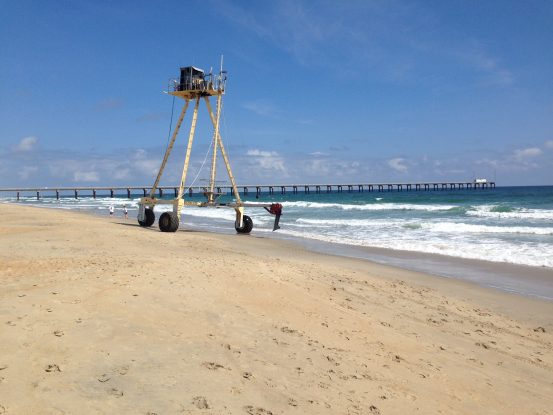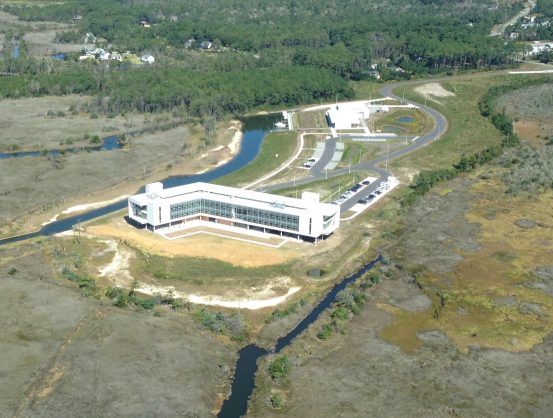Throughout the years the Outer Banks has attracted more than its fair share of visitors, interlopers and those who choose to become permanent residents. Most arrive for the beauty of our beaches and relaxed lifestyle, others for water sports and recreation, fishing and hunting. More recently we’ve seen those relocating to cultivate business opportunities. Lately, an interesting new trend has developed and that is the arrival of scientists.

Often overlooked, and not yet a major employment category, we’ve seen an influx of scientists and their staff arriving to support the steady growth of scientific research in our coastal region. It began in 1977 with the Field Research Facility in Duck. Boasting a concrete pier that juts 1,840 feet into the Atlantic Ocean, the Duck Pier is an ideal location for study. An Army Corps of Engineers station, its primary purpose is to investigate nearshore wave action.
Some of the discoveries made have had a direct impact on determining the effectiveness of beach nourishment, predicting storm surge and understanding rip current patterns. They have also done considerable research on how waves propagate, a branch of study that provides practical knowledge for the Outer Banks surfing lifestyle.
Dr. Jeff Hanson, the “swell consultant” with OBXSurfInfo.com, spent 30 years studying waves at the Duck Pier. Fascinating to talk to, Dr. Hanson can explain why a storm passing between Africa and South America may result in good surf condition on the Outer Banks a week to ten days later.
Currently there are 15 employees at the Pier, and with 40 years of data recorded, it is considered a prime facility to study wave action and the surf zone. Teams of scientists and individuals, both nationally and internationally, make regular pilgrimages to this site. Although summer guided tours were previously available, recent budget cuts have temporarily suspended all tours. For more information, please call (252) 261-3511.
The Duck Pier is not the only place scientific minds gather. In 2012 the Coastal Studies Institute (CSI) opened its doors. The CSI had actually been a part of the Outer Banks since 2003, but when the new facility opened in the marshlands between the town of Wanchese and Manteo, the level of research escalated.

Like the Duck Pier, there are currently 15 staff members listed on their website, but the work done at the site extends far beyond the glass walls of the structure. A part of the UNC school system, most staff are listed as ECU personnel, and the facility has a mandate for a public outreach. Guest lecturers are a regular part of this program, and speakers arrive via their “Science on the Sound” program to discuss topics like shark research in the sounds and the Gulf Stream and North Carolina. Recently Jaco Boshoff, Maritime Archaeologist with the Iziko Museums of South Africa, was on hand to discuss slave ship wrecks off the South African coast.
CSI research is every bit as cutting edge as that being done at the Duck Pier facility. There are studies on how the Gulf Stream currents can be harnessed for power as it passes by Cape Hatteras, its closest point to the continental US. There are scientists who make regularly funded jaunts to Antarctica and are then invited to international conferences on sea level rise and estuarine science. Free tours at CSI are available on Wednesdays at 1:00, but please call Kimberly Armstrong at (252) 475-5404 to make reservations.
